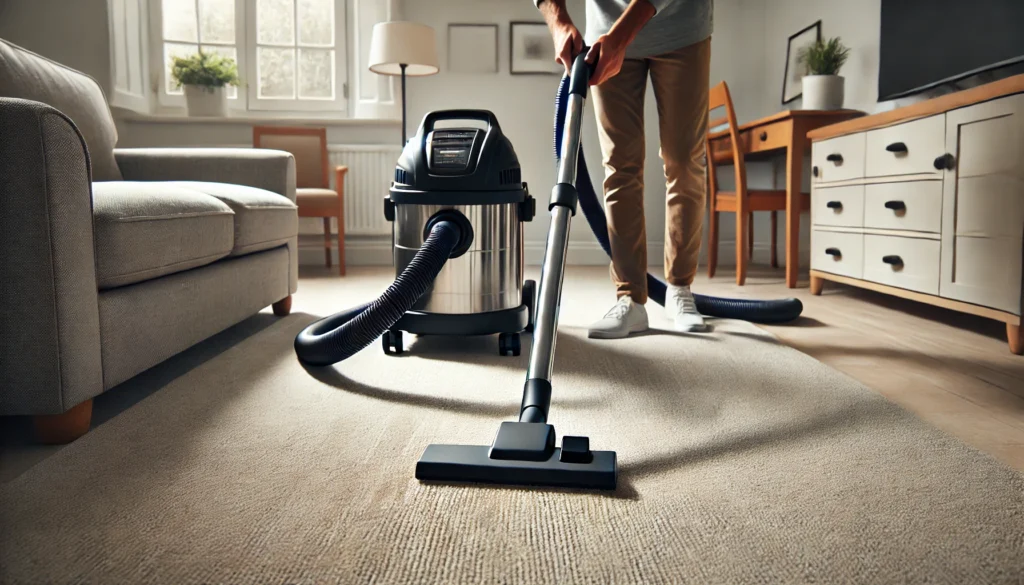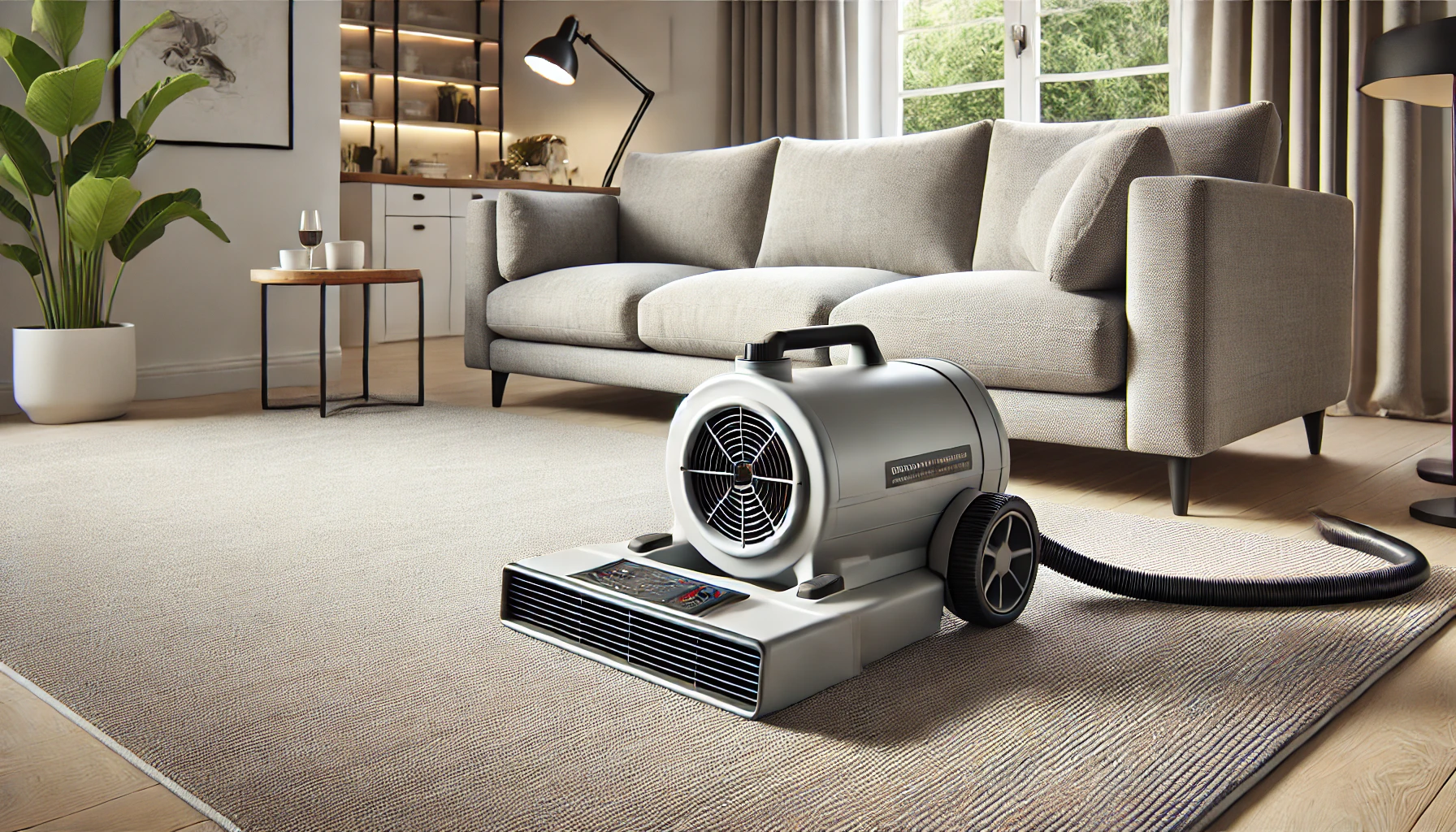Carpets play a significant role in the comfort and aesthetics of our homes, but keeping them clean can be a challenge. After a thorough cleaning, whether by professional service or DIY methods, drying your carpet properly is crucial to prevent mold, mildew, and unpleasant odors. This guide will walk you through every step of the process, ensuring your carpet is dried efficiently and effectively.
The Importance of Drying Your Carpet Properly
After cleaning a carpet, many people underestimate the importance of thoroughly drying it. A wet or damp carpet is more than just a nuisance; it can become a breeding ground for mold, mildew, and bacteria. Not only does this pose health risks, but it can also lead to unpleasant odors and damage the carpet fibers, reducing the lifespan of your investment.
In this guide, you’ll learn how to dry carpet after cleaning efficiently, using both natural and mechanical methods. We’ll cover the essential tools you’ll need, the step-by-step process to follow, and common pitfalls to avoid. Whether you’re drying a small area or an entire room, this guide will ensure your carpet stays fresh, clean, and in top condition.
Step-by-Step Instructions
Drying a carpet after cleaning requires a systematic approach. Each step in this section is designed to ensure your carpet dries quickly and evenly, preventing the growth of mold and mildew. Let’s dive into the details.
Step 1: Remove Excess Water
Why It’s Important:
Removing as much water as possible immediately after cleaning is the most critical step. The more water you remove, the quicker your carpet will dry.
How to Do It:
- Use a Wet/Dry Vacuum: If you have one available, a wet/dry vacuum is perfect for extracting excess water from the carpet. Go over the carpet multiple times until you notice the vacuum is no longer picking up significant amounts of water.

- Blot with Towels: For those without a wet/dry vacuum, use clean, dry towels to blot the carpet. Press firmly to absorb as much water as possible. Replace the towels as they become saturated and continue blotting until the area feels damp rather than wet.
Step 2: Increase Air Circulation
Why It’s Important:
Air circulation is key to drying your carpet. The more air that flows over and through the carpet, the faster it will dry.
How to Do It:
- Open Windows and Doors: If weather permits, open windows and doors to allow fresh air to circulate through the room. Cross-ventilation, where air flows in from one side and out the other, is particularly effective.

- Use Fans: Place one or more fans in the room, directing airflow across the carpet. Box fans or oscillating fans work well for this purpose. If possible, elevate the fans slightly to ensure the air is moving across the surface of the carpet.
- Turn on Ceiling Fans: If you have ceiling fans, switch them on to maximize airflow. This is especially helpful in rooms without windows.
Step 3: Dehumidify the Room
Why It’s Important:
Humidity slows down the drying process. By reducing the moisture in the air, you can speed up the carpet drying time.
How to Do It:
- Use a Dehumidifier: If you live in a humid area or if the room lacks good ventilation, a dehumidifier can be a game-changer. Set it up in the center of the room and let it run continuously until the carpet is completely dry.
- Monitor Humidity Levels: Keep an eye on the humidity levels using a hygrometer. Aim to keep the room’s humidity below 50% to ensure faster drying.
Step 4: Utilize Heat to Accelerate Drying
Why It’s Important:
Heat can help evaporate moisture faster, aiding in the drying process. However, it should be used carefully to avoid damage to the carpet fibers.
How to Do It:
- Turn on the Heater: If it’s cold outside, turning on the heater can help warm up the room, reducing the drying time. However, avoid using too much heat, as it can damage some types of carpet fibers.
- Use a Hairdryer for Small Areas: For small wet spots or stubborn dampness, you can use a hairdryer on the lowest heat setting. Hold it a few inches above the carpet and move it back and forth until the area is dry.
Step 5: Lift the Carpet for Better Airflow
Why It’s Important:
Sometimes, drying the surface isn’t enough. If water has seeped into the padding or subfloor, lifting the carpet can allow air to circulate underneath, ensuring complete drying.
How to Do It:
- Carefully Lift the Carpet Edges: Using a pair of pliers, gently lift the edges of the carpet, being careful not to damage the fibers or the backing. You don’t need to lift the entire carpet—just enough to allow air to flow underneath.
- Place Fans Underneath: Position a fan to blow air underneath the carpet. This will help dry the padding and subfloor, preventing mold growth.
- Check for Dampness Regularly: Periodically check the carpet and padding to ensure they are drying. Reposition the fans as needed to target any damp areas.
Step 6: Use Carpet Drying Fans (Air Movers)
Why It’s Important:
Carpet drying fans, also known as air movers, are powerful tools designed specifically for drying carpets and floors. They can make the drying process go a lot faster.
How to Do It:
- Rent or Buy an Air Mover: If you have a large area to dry, consider renting or purchasing an air mover. These are available at most hardware stores and are often used by professionals.
- Position the Air Mover: Place the air mover at one end of the room, directing the airflow along the length of the carpet. This ensures the air is pushed across the entire surface.
- Rotate and Adjust as Needed: Depending on the size of the room, you may need to move the air mover periodically to ensure even drying. If drying multiple rooms, focus on one area at a time.
Step 7: Avoid Walking on the Carpet
Why It’s Important:
Walking on a damp carpet can not only impede the drying process but also cause the fibers to mat down, leading to uneven texture and potential damage.
How to Do It:
- Restrict Access: If possible, restrict access to the room while the carpet is drying. Place barriers or signs to remind household members to stay off the carpet.
- Use Protective Coverings: If you must walk on the carpet, consider laying down clean, dry towels or a plastic runner to protect the fibers and avoid tracking in dirt.
- Check Regularly: Inspect the carpet periodically to ensure it’s drying evenly. If certain areas are drying slower than others, adjust fans or open windows to target those spots.
Must Read : DIY Carpet Cleaning Solution: An Eco-friendly Approach
Troubleshooting and Tips
Even with the best efforts, sometimes challenges arise when drying a carpet. Here are some common issues and how to address them.
Common Problems and Solutions
- Problem: Damp Odor Persists
- Solution: If your carpet still smells damp after drying, sprinkle baking soda over the area and let it sit for several hours before vacuuming it up. Baking soda absorbs moisture and odors, leaving your carpet smelling fresh.
- Problem: Carpet Feels Crunchy After Drying
- Solution: This can happen if soap or detergent residue is left behind. Mix a solution of water and white vinegar (1:1 ratio) and lightly mist the carpet with it. Then, blot with clean towels and let the carpet dry again. Any leftover residue is broken down with the aid of the vinegar.
- Problem: Carpet Takes Too Long to Dry
- Solution: Check the room’s ventilation and humidity levels. Ensure fans are positioned correctly and consider adding a dehumidifier if the air is very humid. Lifting the carpet to increase airflow underneath can also speed up the process.
Pro Tips for Faster Drying
- Use Specialized Carpet Drying Fans: If you frequently clean carpets, investing in a specialized carpet drying fan can make the process quicker and more efficient.
- Clean in Small Sections: Instead of cleaning an entire room at once, tackle smaller sections. This allows you to focus your drying efforts on one area at a time, making the process more manageable.
- Schedule Cleaning Wisely: Plan your carpet cleaning for days when the weather is dry and sunny. This allows you to open windows and doors for better ventilation, speeding up the drying process.
Conclusion
Properly drying your carpet after cleaning is crucial for maintaining its appearance, extending its lifespan, and ensuring a healthy indoor environment. By following the steps outlined in this guide, you can effectively dry your carpet and avoid common issues like mold, mildew, and unpleasant odors.
Whether you’re dealing with a small spill or a whole-room cleaning, the techniques provided will help you achieve the best results. Remember, the key to success is a combination of removing excess water, improving air circulation, and using the right tools for the job.
Ready to put your new skills to the test? Start your carpet drying process now, and let us know how it goes! Share your experience or any tips you’ve found helpful in the comments below.
With this guide, you’re equipped with everything you need to know about how to dry carpet after cleaning. Good luck, and happy cleaning!
FAQs About How to Dry Carpet After Cleaning
1. How long does it typically take for a carpet to dry after cleaning?
The drying time can vary depending on factors like carpet type, room ventilation, and the cleaning method used. Generally, carpets take 6 to 12 hours to dry completely, but with proper techniques, you can reduce this time.
2. Can I speed up carpet drying with a hairdryer or heater?
Yes, but be cautious. Using a hairdryer or heater can help with small areas, but avoid excessive heat as it can damage the carpet fibers. Always use these tools on a low setting and keep them moving to prevent overheating one spot.
3. Is it safe to walk on a damp carpet?
It’s best to avoid walking on a damp carpet to prevent matting down the fibers or causing dirt to settle into the wet material. If you must walk on it, use a protective covering like a towel or plastic runner.
4. What should I do if my carpet smells musty after drying?
A musty smell often indicates that the carpet hasn’t dried completely. Sprinkle baking soda over the area and let it sit for several hours before vacuuming. If the smell persists, the padding or subfloor might still be wet, and you may need to lift the carpet to allow it to dry fully.
5. How can I prevent mold and mildew growth in my carpet?
To prevent mold and mildew, make sure to remove as much water as possible immediately after cleaning. Use fans, dehumidifiers, and proper ventilation to dry the carpet quickly. If you’re dealing with high humidity, consider using a dehumidifier to keep moisture levels low.

